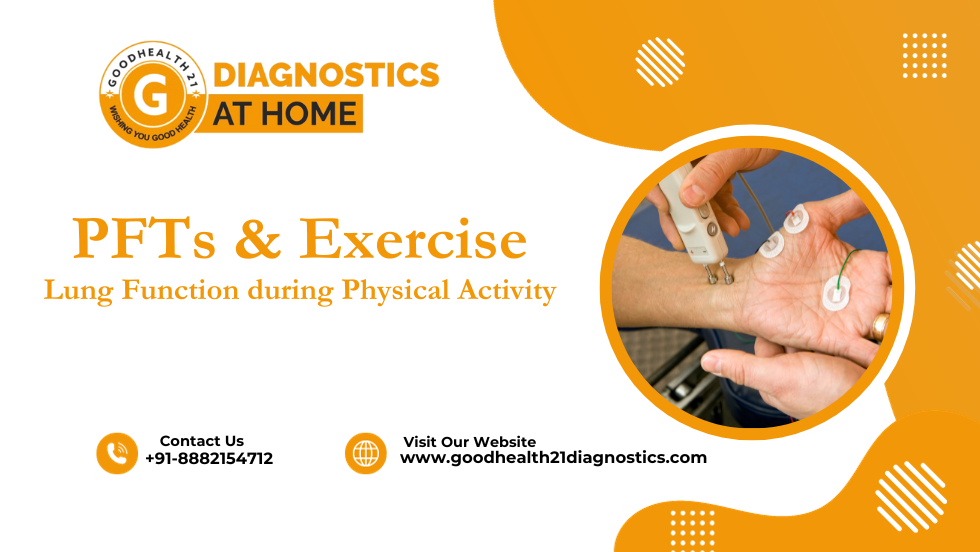Physical fitness and overall well-being are in complicate link with lung health, that is very important to understand how our respiratory system functions during exercise. If we talk about Pulmonary Function Tests (PFTs) , it plays an essential role in estimate lung function, it provides valuable insights into respiratory capacity, efficiency, and potential limitations. This article will make you understand the significance of PFTs in the context of exercise, lets see how these tests help assess lung function under the dynamic conditions of physical activity
Understanding Pulmonary Function Tests (PFTs)
Series of diagnostic procedures are designed to measure the capacity and efficiency of the respiratory system around Pulmonary Function Tests. These tests include spirometry, lung volume measurements, and diffusion capacity assessments making it more result centric. Spirometry is measurement of amount and speed of air that can be inhaled and exhaled, it serves as a foundational metric to assess lung health.
Spirometry and Exercise Capacity
Spirometry is a cornerstone in evaluating lung function during exercise. When individuals engage in physical activities, demands for oxygen increases that put a burden on the respiratory system. Spirometry measurements are conducted before, during, and after exercise that can reveal essential information about lung capacity, expiratory flow rates, and any potential airflow limitations. Mostly, athletes use this to improvise their strength and exercise routine as it gives perfect data of respiratory conditions and optimizes performance.
Spirometry and Exercise Capacity
Spirometry is a cornerstone in evaluating lung function during exercise. When individuals engage in physical activities, demands for oxygen increases that put a burden on the respiratory system. Spirometry measurements are conducted before, during, and after exercise that can reveal essential information about lung capacity, expiratory flow rates, and any potential airflow limitations. Mostly, athletes use this to improvise their strength and exercise routine as it gives perfect data of respiratory conditions and optimizes performance.
Assessing Airway Resistance and Obstruction
Airway resistance and obstruction is one of the important factors that can affect physical performance so, PFTs is important to measure it to improvise it. Conditions such as asthma or chronic obstructive pulmonary disease (COPD) may become severe with increased airway resistance, that will lead to reduced airflow during exercise. By doing PFTs one can evaluate it with the help of healthcare professional, they will provide prescription to enhance lung function.
Diffusion Capacity
Now we know about airflow ,after that is comes diffusion capacity assessment, it provides valuable information about the efficiency of oxygen exchange in the lungs. During exercise, the demand for oxygen consumption by the bloodstream intensifies, that must be checked. By PFTs diffusion capacity is measured that helps to identify any barriers of this vital process, it sheds lights on potential respiratory limitations that might impact overall exercise tolerance and recovery.
Special Considerations for Athletes
Athletes, especially those in endurance sports, depends heavily on optimal lung function for peak performance. PFTs is made for athletes, it can give comprehensive evaluation of lung health that helps in identifying potential areas of improvement, to fine-tune training strategies perfectly, and prevent respiratory issues that may restrict athletic achievements. The integration of PFTs into sports medicine can contribute to a holistic approach to athlete well-being.
Challenges and Limitations of PFTs during Exercise
PFTs can’t be trusted blind folded, one must be attentive and logically precise, to conduct these tests during exercise poses challenges. One must coordinate real-time measurement with physical activity with specialized equipment and careful consideration of the test environment. Additionally, the test varies on tolerance and technique, they may influence test results.
Clinical Applications and Rehabilitation
When the person with respiratory conditions is in rehabilitation period, PFTs should have clinical settings. When healthcare professionals have real-time PFT data they will create to create personalized and effective interventions. This targeted approach not only improves lung function but also enhances overall fitness and quality of life for individuals with respiratory challenges
Future Directions and Emerging Technologies
Emerging tools provides more comprehensive assessments of lung function during exercise, that is the power of advanced technology. Portable and wearable devices is in public demand, it offers real-time monitoring, shows glimpse of how the respiratory system responds to various physical activities in diverse settings.
In the pursuit of holistic health and optimal physical performance, understanding lung function during exercise is paramount. Pulmonary Function Tests emerge as indispensable tools in this endeavor, offering a window into the dynamic interplay between the respiratory system and physical activity. As technology advances, the integration of PFTs into exercise science and medicine promises to further enhance our ability to tailor interventions, optimize training regimens, and ultimately promote lung health for individuals across the fitness spectrum.

